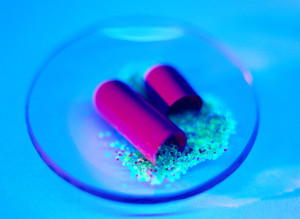One of the leading cancer researchers in the US has called for biosimilars manufacturers to undertake additional research. In an interview with The ASCO Post, Professor Mark Pegram, MD, Professor of Medicine and Associate Director for Clinical Research, Sylvester Comprehensive Cancer Center at the University of Miami Health System, Florida, USA, said, ‘Oncologists will be concerned about the safety of biosimilars. They will want to ensure that the chemistry, manufacturing, and composition are on par with the labelled product.’
Even supposedly insignificant changes to the manufacturing processes of biological compounds can have a catastrophic effect [1]. For example, a minor change in the formulation of Eprex (epoetin alfa) resulted in some patients developing anti-epoetin antibodies that neutralised both endogenous erythropoietin and the injected epoetin, and rendered the bone marrow aplastic for erythropoietic progenitor cells [2-6].
This has raised concerns about the safety of biosimilars, namely that if they are manufactured using even a slightly different process from that of their originator product, in all probability resulting in structural and biochemical differences in the actual molecule, their safety could not be guaranteed without extensive clinical testing. In Europe, for erythropoietin biosimilars, EMA advocates at least two randomised controlled trials, with safety data collected over at least 12 months from at least 300 patients, in order to identify potential immunogenicity [1]. Specific reference is made to include assessment of the incidence of pure red cell aplasia (PRCA) within the biosimilar’s pharmacovigilance plan, but even with 300 patients, PRCA may not be detected due to this relatively small study size and the rarity of the condition [1, 7].
In the US, FDA is struggling to reconcile the science of biosimilar development with the new regulatory framework required by the Biologics Price Competition and Innovation (BPCI) Act of 2009. The BPCI Act authorised FDA to oversee an abbreviated pathway for approval of these agents. The many challenges were recently described in the New England Journal of Medicine [8].
‘I am sure the FDA, clinicians, and patients themselves will be in tune with the safety issue and will be relying on very high quality controls,’ noted Professor Pegram. ‘I suspect the FDA will require non-inferiority trials to assure not only safety but evidence-based efficacy’, he added.
Professor Pegram believes that conducting additional trials to demonstrate such non-inferiority would be commercially viable to biosimilar manufacturers and that the cost of conducting clinical trials would be offset by the potential for enormous profit. ‘Some recombinant protein drugs are a multibillion dollar global market’, he insisted. ‘If it costs a few hundred million to do a phase III non-inferiority trial and tap into [an oncology] market, of course it could be worth it to industry.’
‘Even if the margins are thin, there is still a huge upside for the right investment,’ he concluded.
Editor’s comment: Evidence is building to suggest that physicians, healthcare providers and patients would use biosimilars more readily if their efficacy and safety data were published.
GaBI Journal would be happy to peer review any such trial data, with a view to publication. If you are interested in contributing a research article to the GaBI Journal, please send us your submission.
Related article
Epoetin alfa and pure red cell aplasia
References
1. Roger SD and Mikhail A. Biosimilars: opportunity or cause for concern? J Pharm Pharmaceut Sci. 2007;10:405-10.
2. Schellekens H. Immunologic mechanisms of EPO-associated pure red cell aplasia. Best Pract Res Clin Haematol. 2005;18:473-80.
3. Casadevall N. Antibodies against rHuEPO: native and recombinant. Nephrol Dial Transplant. 2002;17(Suppl 5):42-7.
4. Casadevall N et al. Pure red-cell aplasia and antierythropoietin antibodies in patients treated with recombinant erythropoietin. N Engl J Med. 2007;346:469-75.
5. Casadevall N. Pure red cell aplasia and anti-erythropoietin antibodies in patients treated with epoetin. Nephrol Dial Transplant. 2003;18(Suppl 8):viii37-viii41.
6. Schellekens H. Erythropoietic proteins and antibody-mediated pure red cell aplasia: a potential role for micelles. Nephrol Dial Transplant. 2004;19:2422.
7. EMA, Committee for medicinal products for human use (CHMP). Annex guideline on similar biological medicinal products containing biotechnology-derived proteins as active substance: non-clinical and clinical issues: guidance on biosimilar medicinal products containing recombinant erythropoietins (EMEA/CHMP/94526/2005).
8. GaBI Online - Generics and Biosimilars Initiative. FDA gives some insight into biosimilar pathway [www.gabionline.net]. Mol, Belgium: Pro Pharma Communications International [cited 2011 December 02]. Available from: www.gabionline.net/Biosimilars/News/FDA-gives-some-insight-into-biosimilar-pathway








 0
0











Post your comment